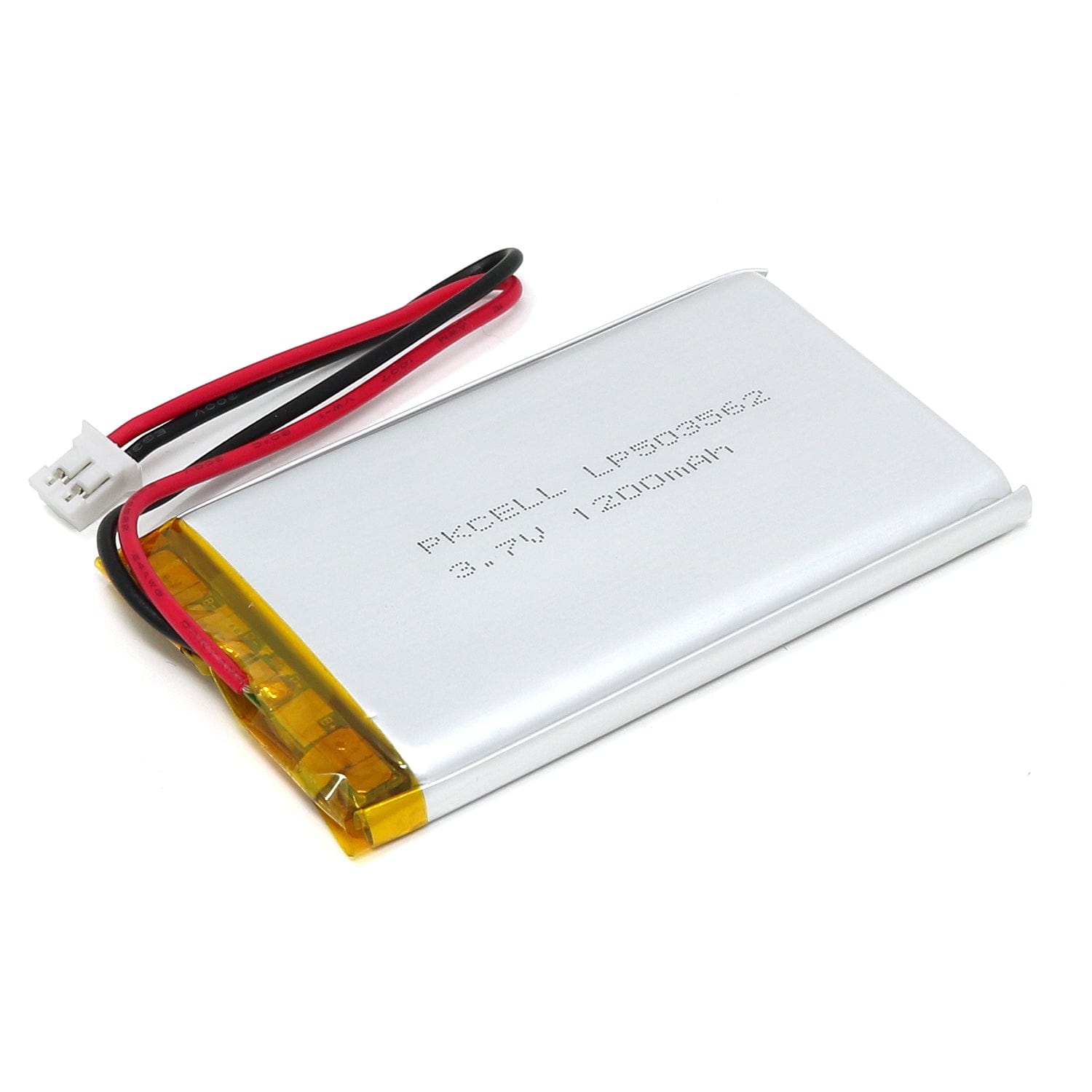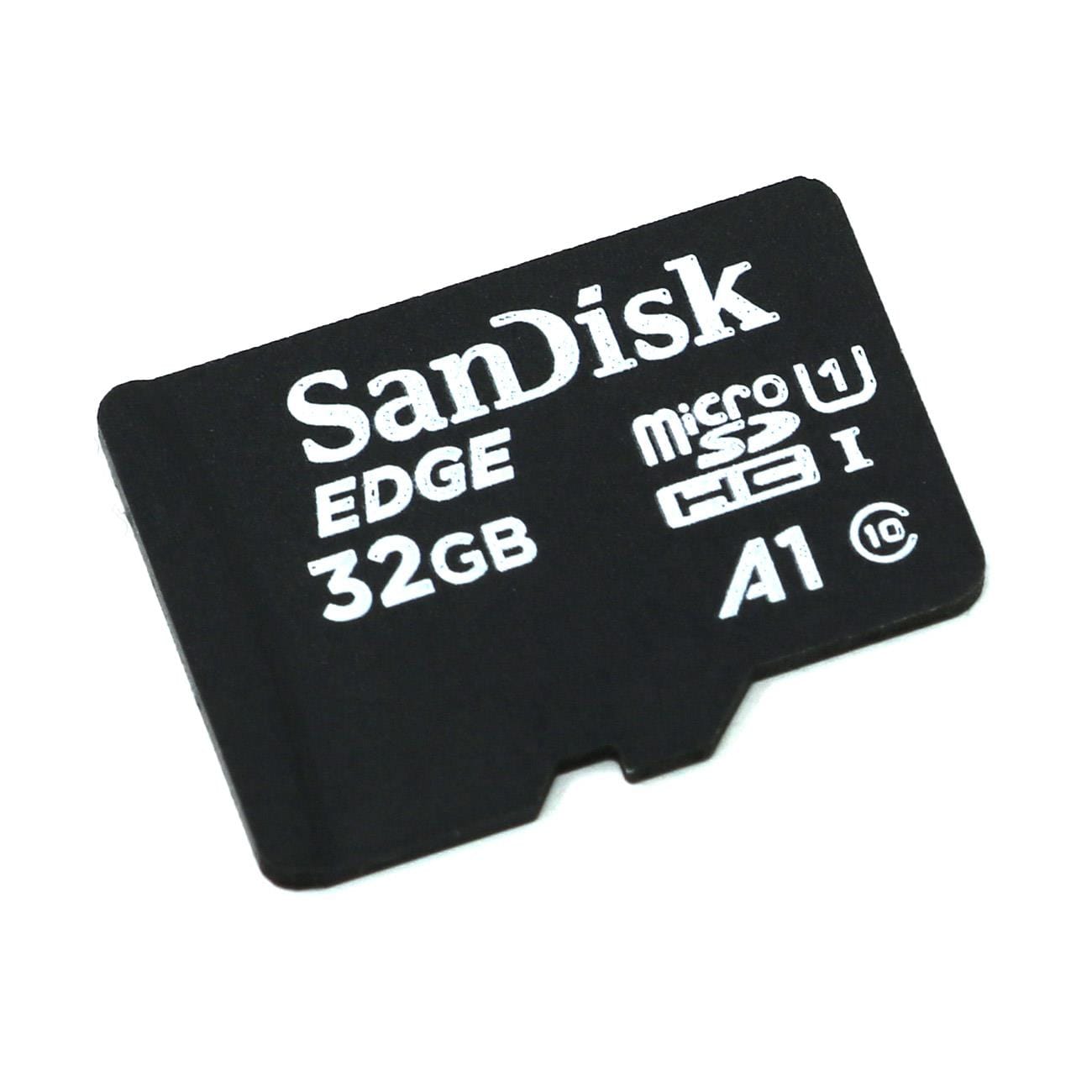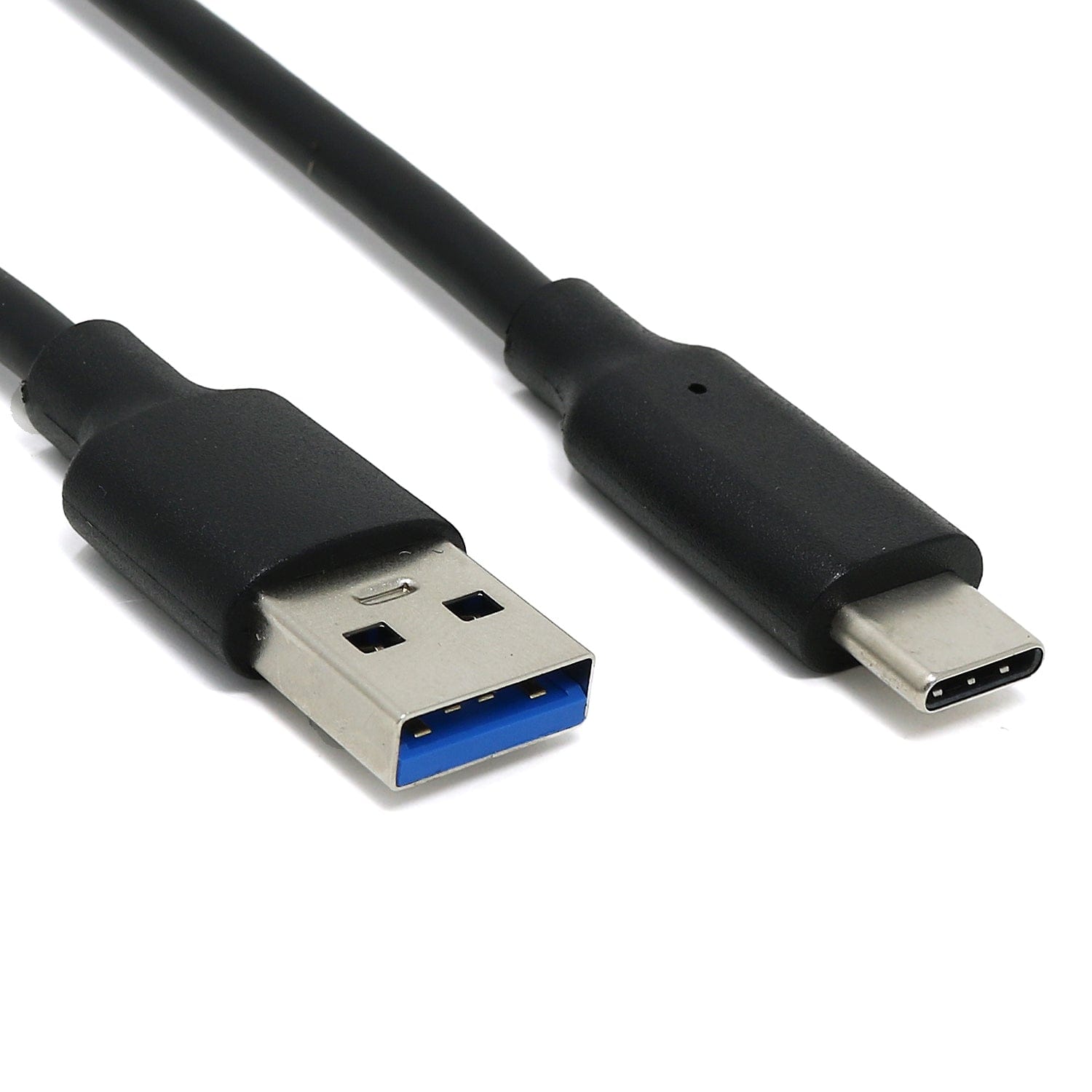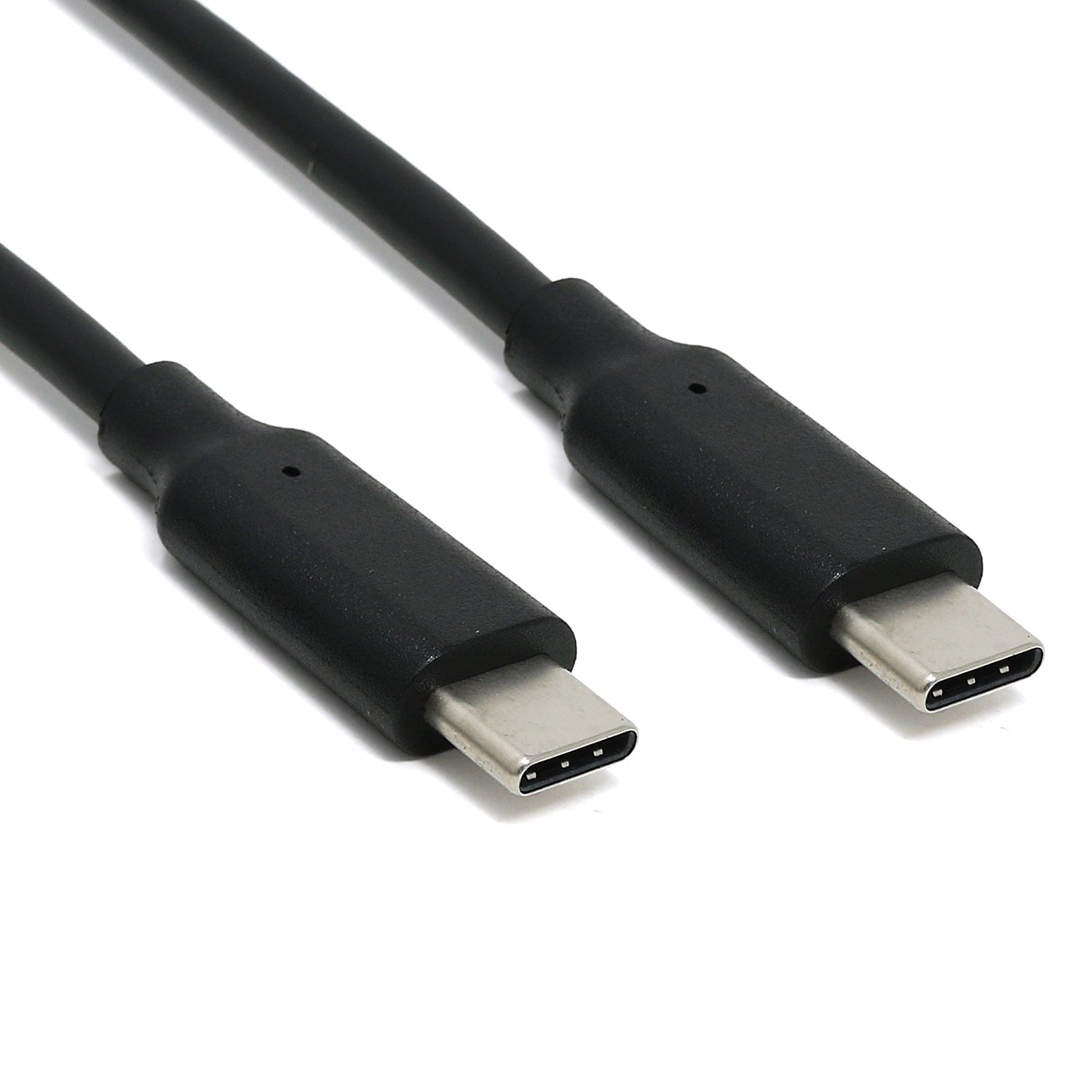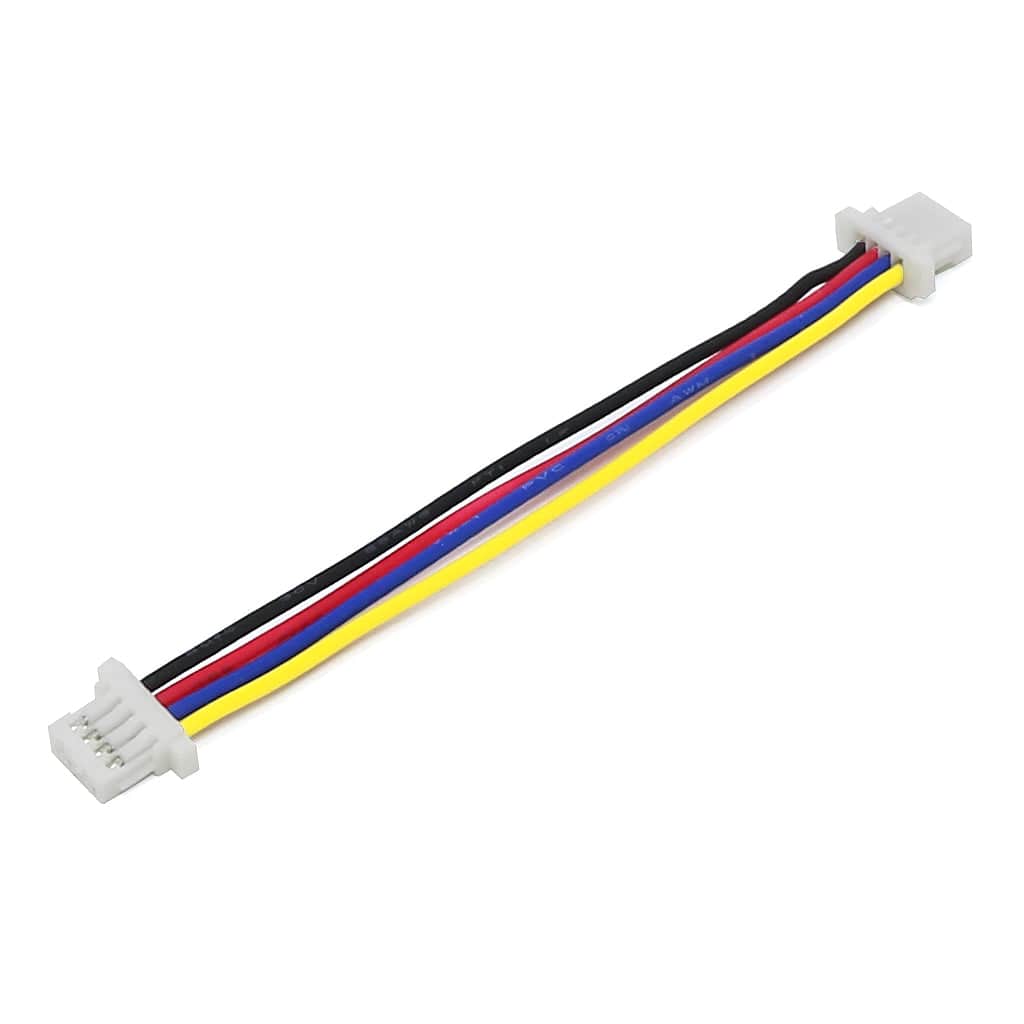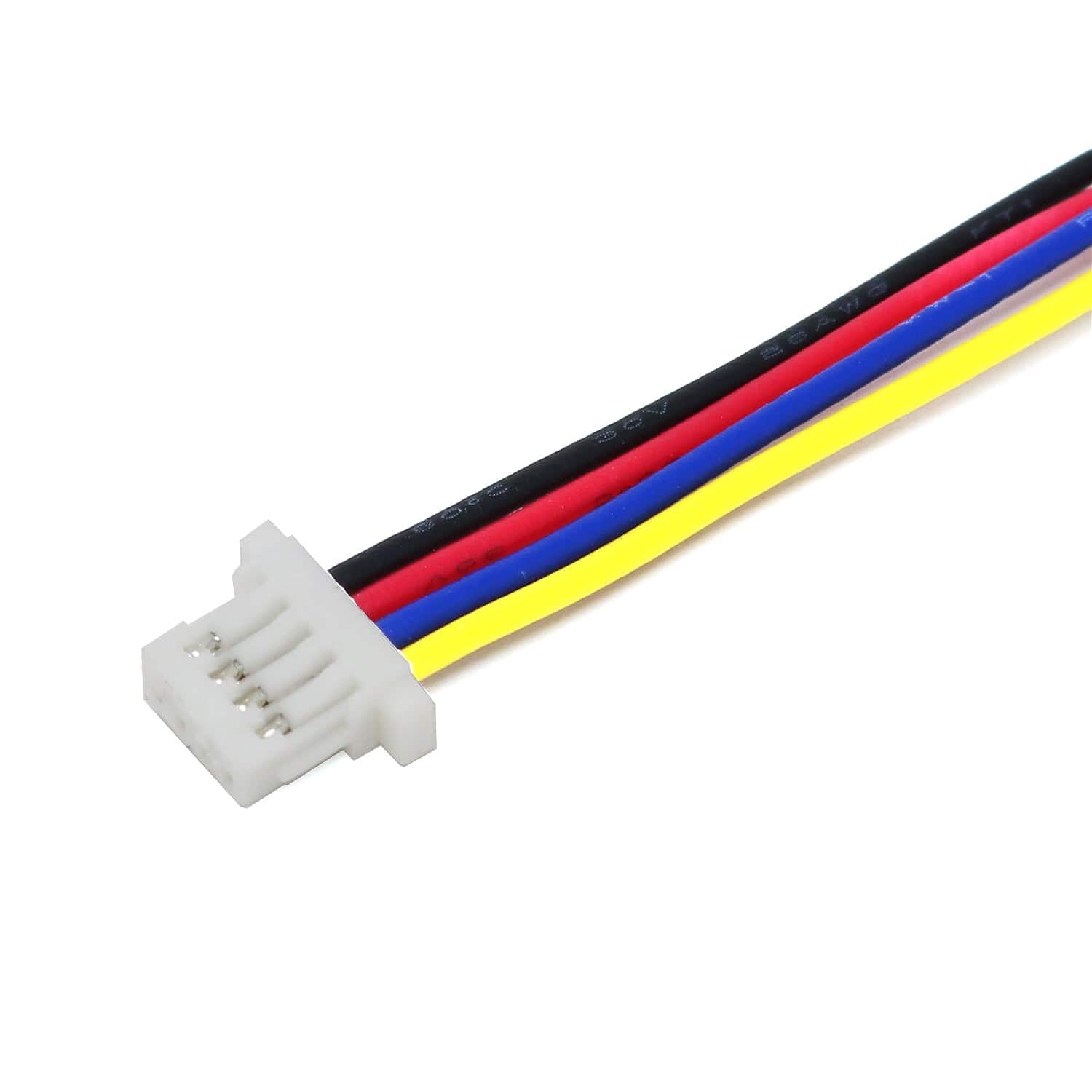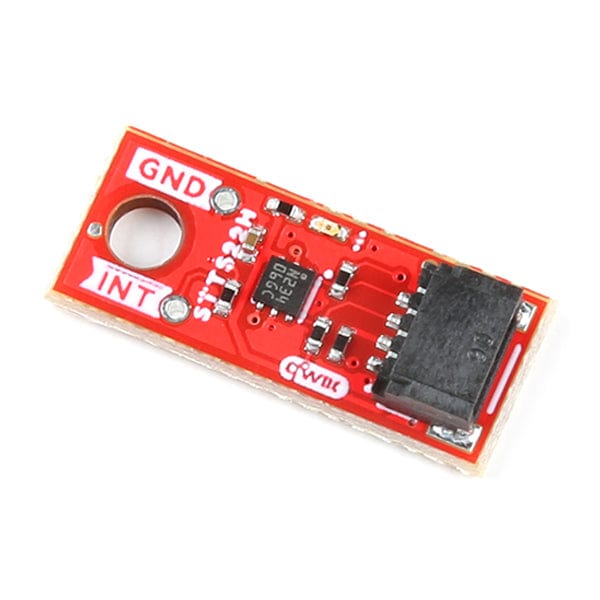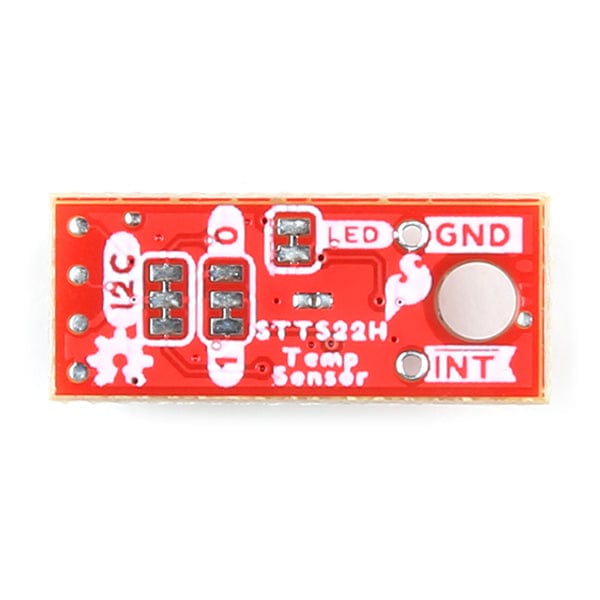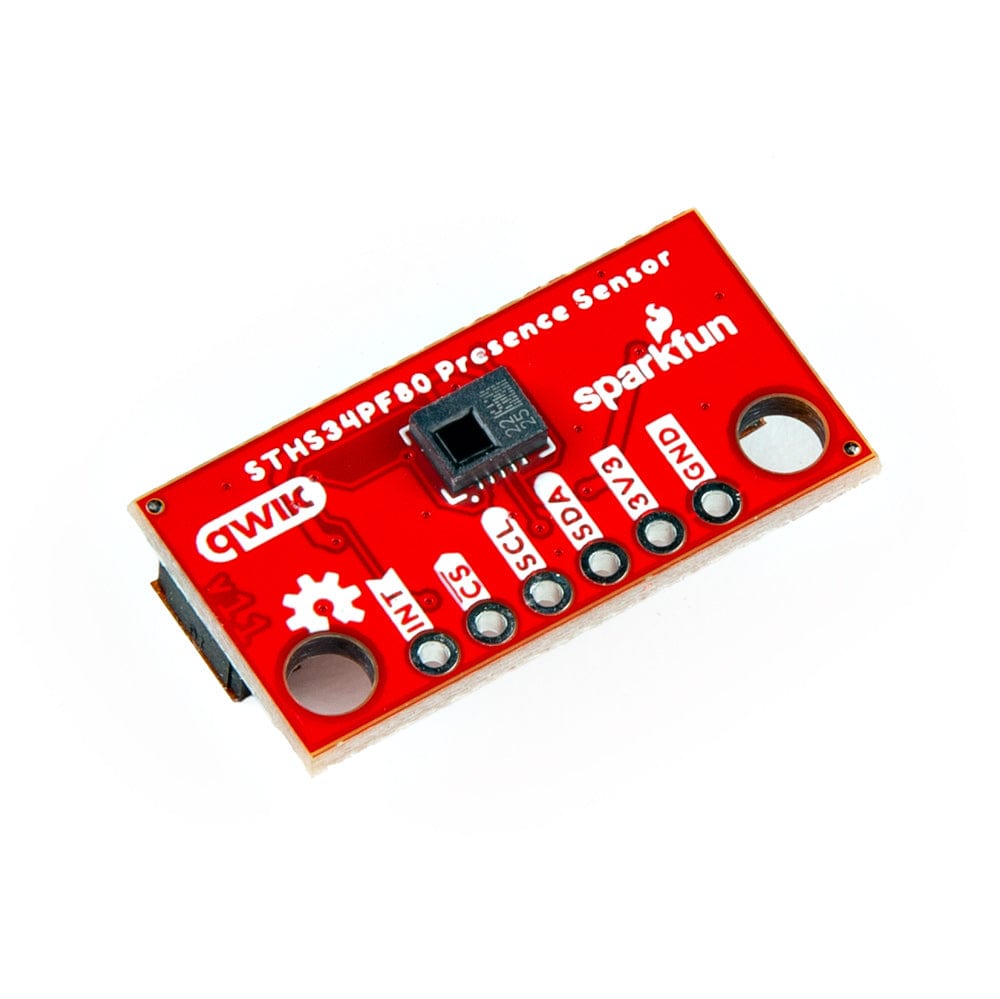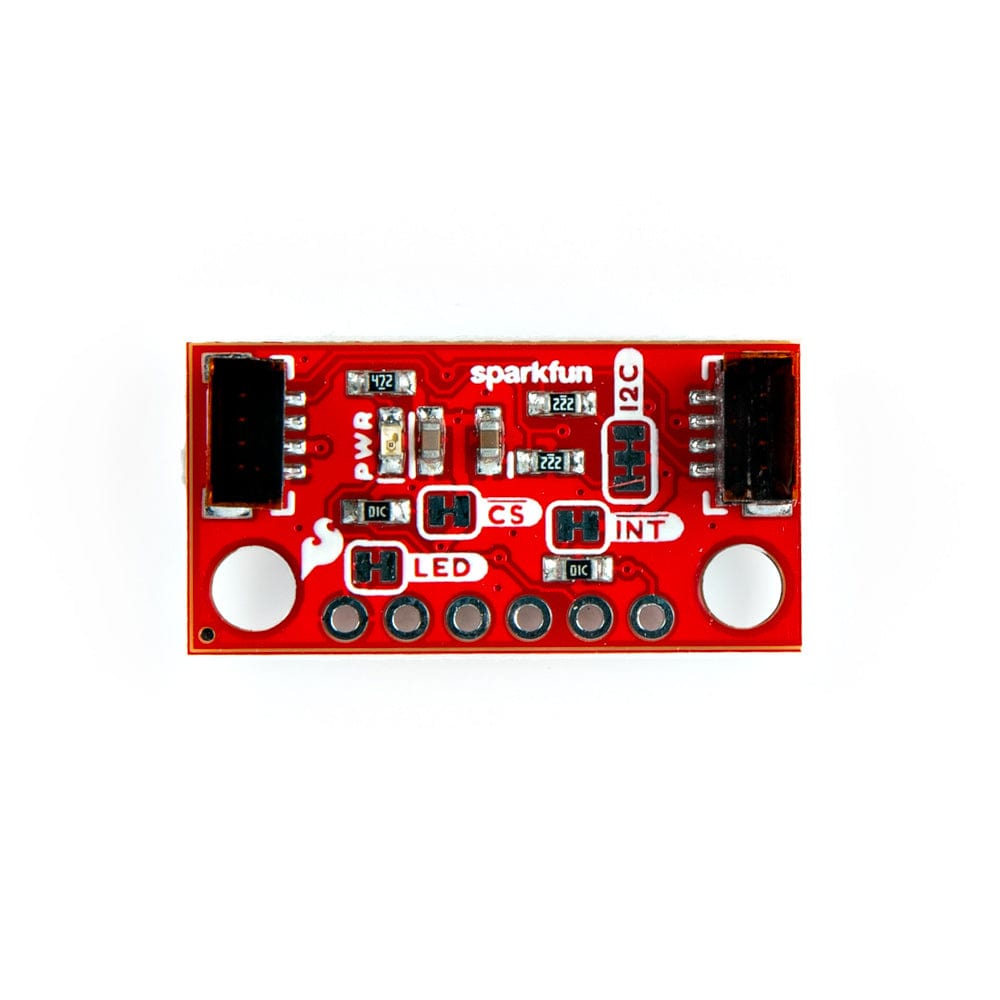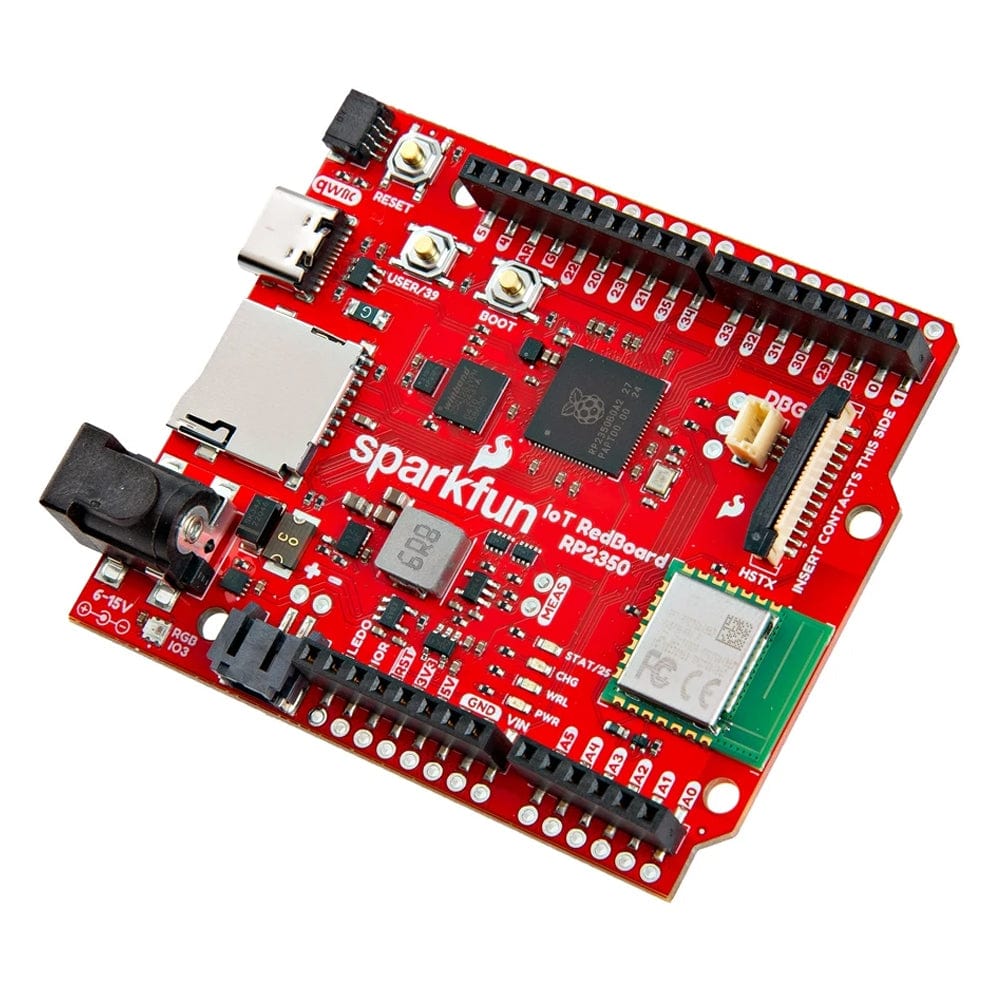
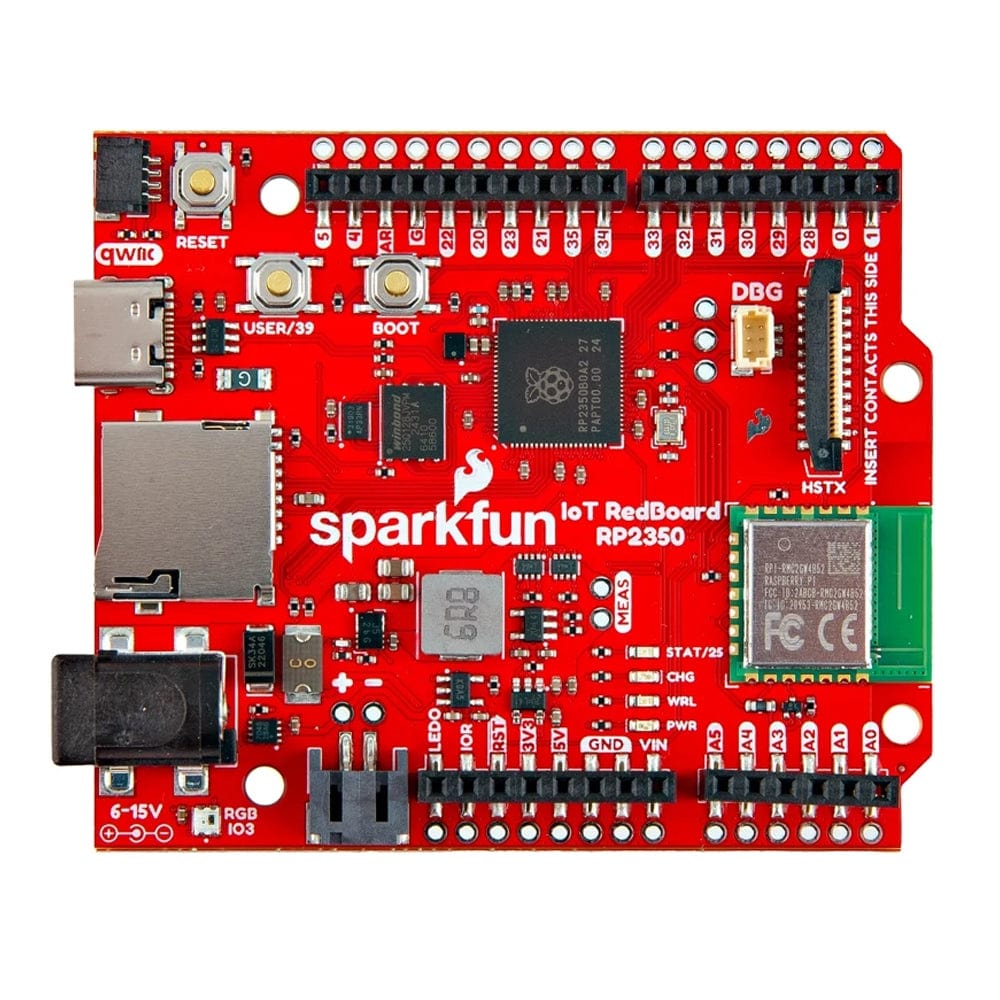
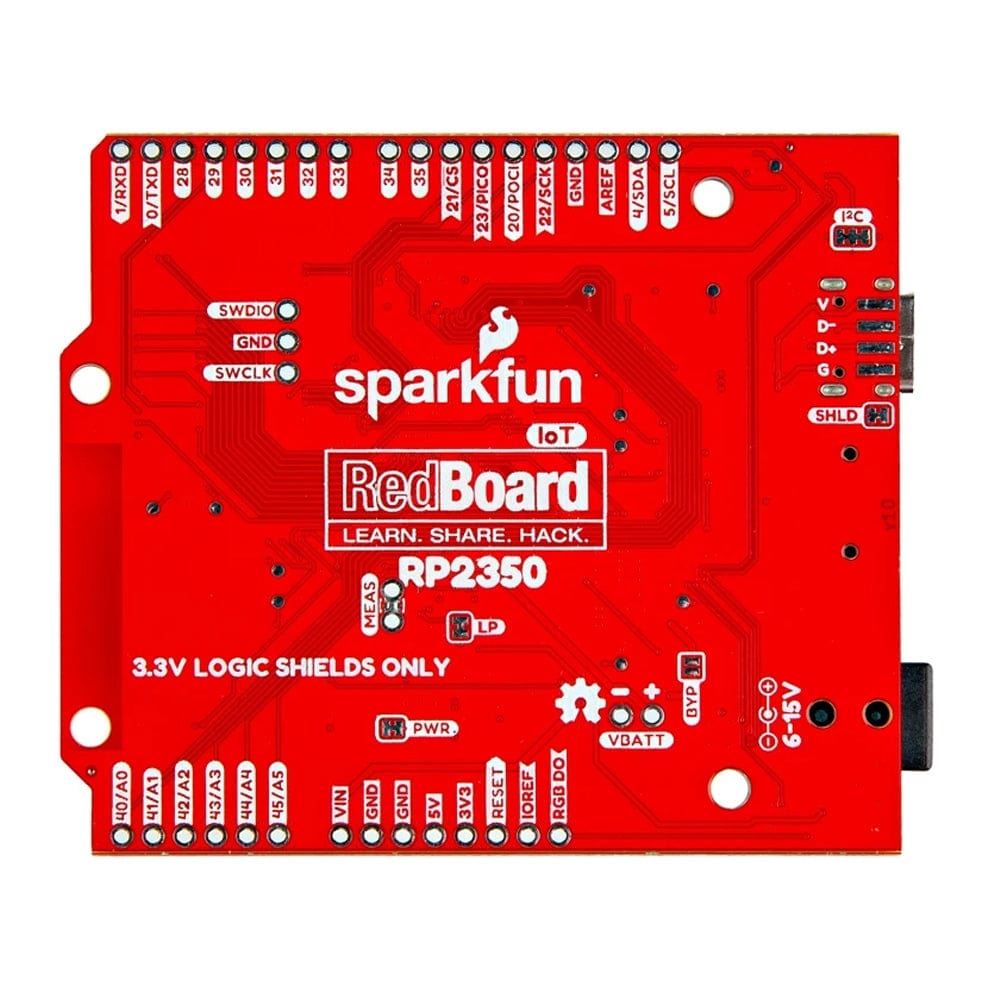
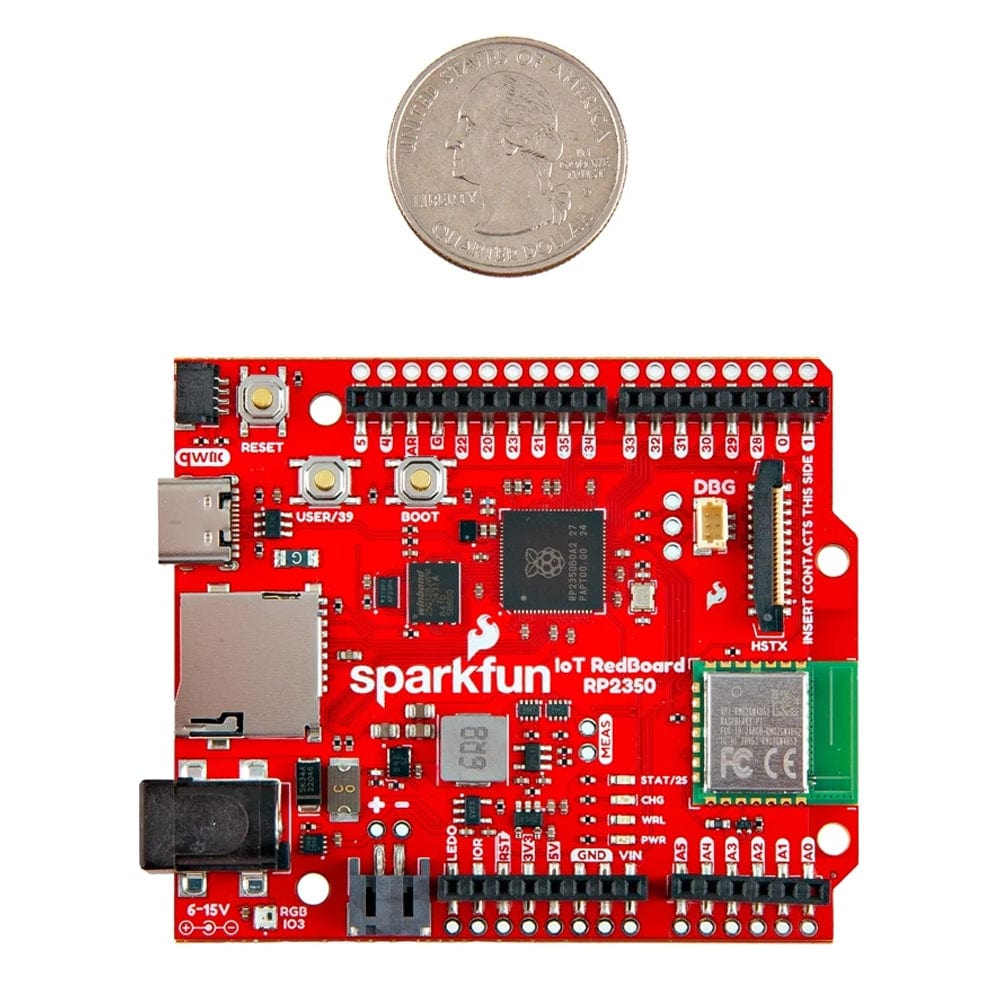
Login / Signup
Cart
Your cart is empty




The RP2350 IoT RedBoard merges the RP2350 MCU and Raspberry Pi RM2 for wireless development in an Arduino R4 format.
The SparkFun RP2350 IoT RedBoard combines the Raspberry Pi RP2350 microcontroller with the Raspberry Pi RM2 radio module to provide a powerful and versatile wireless development platform in the Arduino R4 form factor. This IoT RedBoard also includes integrated LiPo battery power and charging circuits, MicroSD card slot, Qwiic connector, 3-pin debug header, as well as a 22-pin ribbon cable connector tied to the RP2350's HSTX (high-speed transmit) pins. The board shares a pinout between female headers and matching 0.1"-spaced plated through-hole (PTH) headers to allow you to choose between temporary or soldered connections.
Raspberry Pi's RP2350 MCU provides a unique dual-core, dual-architecture configuration that allows users to select, in software, between a pair of Arm© Cortex-M33 cores, a pair of Hazard3 RISC-V cores, or one of each all running at up to 150 MHz! Now, this doesn't mean the RP2350 is a quad-core microcontroller. Instead, users can select which two processors to run on boot. You can run two processors of the same type or one of each. This IoT RedBoard uses the RP2350B microcontroller variant, which has 48 GPIO, eight analog inputs, two UARTs, two SPI and I2C controllers, and a USB 1.1 controller for host and device support.
The Raspberry Pi Radio Module (RM2) operates over an SPI interface. Along with supporting both WiFi 4 and Bluetooth® 5.2, the RM2 supports both basic (1 Mbps) and enhanced (2 or 3 Mbps) data rates for standard Bluetooth as well as BLE (Low Energy).
The board includes two built-in expanded memory options: 16MB of external Flash and 8MB PSRAM connected to the RP2350's QSPI interface. The IoT RedBoard - RP2350 has software support for C++/C using the Raspberry Pi Pico SDK, MicroPython, and Arduino so that users can opt for their preferred programming environment and language.
IoT RedBoard Features
RP2350 General Features





